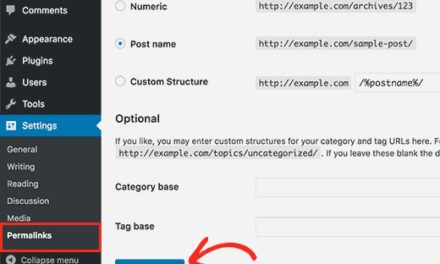Like most WordPress users, you probably rely heavily on plugins to power some of your website’s most critical tasks. However, it’s important to understand that not all plugins are equally ‘safe’ to use.
Knowing how to spot secure WordPress plugins is key to minimizing vulnerabilities attackers can exploit. Fortunately, there are several qualities that can tip you off to whether a plugin is safe to use.
In this article, we’re going to walk you through the best practices for selecting secure WordPress plugins. Before we get started, let’s talk about plugin vulnerabilities in general!
Why Plugins Can Make Your WordPress Site Less Secure
When you launch a new WordPress website, you use a ‘clean’ version of the Content Management System (CMS). That means its code hasn’t been modified in a major way (although some hosts do make small tweaks and additions), and it should be safe to use.
The moment you start expanding on that codebase with plugins, you begin to add potential vulnerabilities to your website that hackers can exploit. In a way, the more plugins you use, the less secure your site becomes.
Using the ‘wrong’ plugin can cause compatibility issues, open your site up to Structured Query Language (SQL) injections, Cross-Site Scripting (XSS), and more. That’s not an exaggeration either – WordPress is so popular that new vulnerabilities pop up every day, even within well-regarded plugins.
Exercising sound judgment when selecting new plugins is all about minimizing these risks. For example, you can almost eliminate the threat of SQL injections by carrying out standard maintenance such as updating WordPress and your plugins. These tasks shouldn’t take much time, and go a long way to help protect your website.
3 Best Practices for Selecting Secure WordPress Plugins
There are several signs that can help you can spot secure WordPress plugins. However, you also may want to minimize the overall number of plugins you use in general. If you have any on your site that you don’t actually need, uninstall them – it’ll help keep your site safe.
For situations when you absolutely need to use a plugin, keep the following best practices in mind when selecting one.
1. Look for Plugins that Receive Regular Updates
If a piece of software receives regular updates, that tells you its developers are actively working to maintain it. That means implementing new features, making changes, and patching security vulnerabilities.
The more outdated a plugin is, the more time attackers might have had to go over its code and find ways to break into sites that use it. Perhaps its standards are deprecated. It may not even be compatible with the latest version of WordPress:

As a rule of thumb, we don’t use plugins that haven’t received updates during the last six months. If you’re navigating the WordPress Plugin Directory, you can easily check when any plugin was last updated by looking at the summary on the right side of the page:

You can also take a look at each plugin’s changelog by perusing the Development tab, as seen above. With that information, you can see a pretty clear picture of how active the plugin’s developers are.
Keep in mind that lots of updates don’t necessarily mean the plugin you want to use is safe. However, as far as indicators go, it’s usually a good sign – and one that’s pretty easy to spot.
2. Check Out Plugin Reviews and Pay Special Attention to Low Scores
Most of us are already accustomed to using reviews to help us make informed purchasing decisions. However, it’s important you not only apply this skill to selecting your next smartphone but also when you’re considering which plugins to use.
Naturally, you want to focus your attention on plugins that have high ratings. We personally prefer to stick with options that have scores of over four stars, which helps us weed out plugins that give users a lot of headaches:

However, high ratings don’t tell the full story. In many cases, you’ll run into plugins that have excellent scores, but also plenty of low ratings. Looking at these negative reviews often reveals the most common problems people encounter when using the plugin:

Let’s face it, sometimes people review plugins negatively for reasons that make little sense. However, those types of reviews are often easy to spot, so you should be safe exercising your judgment.
Premium plugins with their own pages often pose a more difficult challenge. They might not include reviews at all, in which case your best bet is to look up third-party opinions using a search engine.
For most popular plugins, you can find at least some reviews online if you look hard enough. If you can’t, it might mean the plugin is too new or too few people are using it, which brings us to our next point.
3. Avoid Plugins With Few Active Installations
The fewer active users a plugin has, the less real-life data there is about potential issues. For example, the plugin might have several compatibility issues or specific vulnerabilities. Until a significant number of users install it, there’s not enough information to go on regarding how secure it is.
As far as best practices go, this one can be a bit tricky. After all, new plugins come out all the time, and a lot of them offer amazing features. Without people testing them and taking small risks, some plugins may never get the attention they deserve.
Those are all valid points, but you also need to take your website’s safety into consideration. To give you an example, if you run an online store that brings in hundreds or thousands of dollars per day in sales, testing new plugins blindly is not a sound idea.
We prefer to focus on plugins that have at least 1,000 active installs. At that point, plugins are likely to have several updates under their belt and multiple reviews. That’s more than enough information for you to decide whether they’re safe to use or not.
You can, of course, try your hand with newer or lesser-known plugins, but make sure to do it safely. That means always backing up your website and using a staging site when possible.
Conclusion
Every plugin you install on your website represents a potential attack vector. That sounds dramatic, but every time you activate a plugin you add more code to your website. If the developers made a mistake or didn’t follow secure practices, that code can make your website more vulnerable to hackers.
The next time you’re looking over potential plugins, keep these best practices in mind to choose the most secure options:
- Look for plugins that receive regular updates.
- Check out plugin reviews and pay special attention to low scores.
- Avoid plugins with few active installations.
Do you have any questions about how to select secure WordPress plugins? Let’s go over them in the comments section below!











